Kumbhaka Pranayama: A Cure for Diseases
10 months ago By Yogi AnoopRetention (Kumbhaka), Concentration (Dharana), and Patience (Dhairya): The Path to Healing
Retention (Kumbhaka): A pot holds water (Kumbhaka), just as the lungs retain breath. Every living being retains a certain amount of breath according to its capacity and appropriately holds the retained element (oxygen) for a few moments. In the science of Pranayama, this entire process is called Kumbhaka.
The word Kumbhaka is derived from ‘Kumbha’ (pot), which has the ability to store and hold water. Similarly, the lungs have the ability to retain and absorb breath.
It is important to note that Kumbhaka is a natural process. In every living being, at the end of inhalation (Puraka) and exhalation (Rechaka), Kumbhaka naturally occurs, even if only for a brief moment.
However, when external or mental factors weaken this ability to retain, and it starts negatively affecting the body and mind, Pranayama uses controlled Kumbhaka to enhance or regulate this process according to one’s natural tendencies.
Nature or Natural Rhythm (Dharana): When a person needs to enhance their lung capacity to retain breath, they develop a mental visualization (Dharana). Although every organ has its own natural retention ability, they function according to their inherent nature.
The fundamental meaning of Dharana here is natural disposition or tendency. When an individual exhibits a lack of this tendency or its deterioration, a mental Dharana is developed to restore this ability, not just in the lungs but also in the mind.
Through Pranayama, blood circulation and the flow of energy within the body are regulated, ensuring that pranic energy reaches the brain efficiently.
If observed at a deeper level, even the smallest cells and the nervous system contain this ability to retain. For instance:
• The stomach retains food.
• The intestines retain waste matter.
• The bladder retains urine.
• Cells retain energy.
Thus, there is a deep connection between Retention (Dharan) and Concentration (Dharana). Based on this understanding, ancient sages and spiritual masters developed various techniques of Pranayama.
This is why Kumbhaka not only enhances lung capacity but also strengthens the retention ability of other organs.
Types of Kumbhaka
1. Internal Kumbhaka (Antar Kumbhaka): When breath is held after inhalation. This is also called Puraka Kumbhaka.
2. External Kumbhaka (Bahir Kumbhaka): When breath is held after exhalation. This is also called Rechaka Kumbhaka.
Nature and Kumbhaka
From a spiritual perspective, individuals who have a calm and serious nature naturally retain their breath for longer durations. This means those who are inwardly stable and peaceful have a greater ability to retain breath.
Recognizing this spiritual secret, sages systematically developed the practice of Kumbhaka. Regular practice of Kumbhaka leads to a profound sense of inner peace and has a deep positive impact on the mind and body.
In Hatha Yoga, Kumbhaka is practiced forcefully, where individuals are encouraged to hold their breath for extended periods. However, in Raja Yoga and spiritual practices, Kumbhaka is practiced while maintaining a balance between nature and the mind.
Forceful Kumbhaka practice lacks wisdom and reasoning, leading to unnecessary stress on various organs. Conversely, when practiced with knowledge and subtle awareness, Kumbhaka naturally balances the body and mind.
With regular practice, the body starts eliminating diseases, and the restless nature of the mind transforms into deep stability and seriousness.
Kumbhaka and Mental Stability
Kumbhaka is not just about enhancing lung capacity; it is also a method to stabilize the brain and mind. When breath is retained for a few moments, neurotransmitters in the brain are balanced, reducing stress and anxiety levels.
👉 Are people with greater patience naturally inclined toward Kumbhaka?
Yes! From a scientific perspective, Kumbhaka activates the prefrontal cortex (the brain’s decision-making center), which enhances self-discipline and patience. This is why spiritual seekers and yogis exhibit deep mental stability and self-control.
👉 Does modern science validate Kumbhaka?
Yes! Scientific studies have confirmed that deep breath retention techniques positively impact the autonomic nervous system.
• Kumbhaka activates the parasympathetic nervous system, leading to deep relaxation and mental tranquility. However, excessive retention may increase blood pressure and heighten mental disorders, which is why it should be practiced under supervision.
• Regular Kumbhaka practice purifies the blood, improves sleep disorders (insomnia), and reduces oxidative stress in the body.
Practical Practice of Patience and Kumbhaka: Based on my spiritual experiences, the primary purpose of Kumbhaka is to develop a stable and serious nature. When stability and peace are established in one’s personality, diseases of the body and mind naturally begin to disappear.
Kumbhaka awakens a natural ability in the brain’s subtle cells, which enhances stability and patience in an individual.
Kumbhaka is not just a physical practice but a mental and spiritual discipline. If someone wishes to develop patience, they should adopt the following practical Kumbhaka methods:
Methodology: Gradually increase the depth of normal breathing. After inhalation (Puraka) and exhalation (Rechaka), hold the breath for 2-3 seconds. Practice it for 5-11 minutes daily according to your capacity. Kumbhaka means stability. After holding the breath, experiencing stability and peace is the most essential aspect. If one does not experience this stability and tranquility, the practice of Kumbhaka is futile. The absorption of breath will not be possible.
Mental Visualization (Dharana): As the flow of energy within the breath slows down and becomes stable, one starts experiencing a deep sense of peace and stillness. This naturally develops a mental perception where the mind automatically starts becoming more stable and thoughtless. Gradually, at a higher level, stability and patience start manifesting within the personality.
👉 Is Kumbhaka only for yogis?
No! It is a natural process that anyone can incorporate into their life. Those seeking mental balance, self-discipline, and deep focus can benefit from including Kumbhaka in their daily routine.
Kumbhaka is not just breath retention; it is a profound technique to balance the mind, brain, and body. It enhances physical health, mental resilience, and self-control.
Thus, Retention (Dharan), Concentration (Dharana), and Patience (Dhairya) are deeply connected to the process of Kumbhaka. When practiced correctly, it not only enhances breath control but also gives mastery over thoughts, emotions, and life itself.
✅ “Experience deep rest while practicing Kumbhaka.”
Recent Blog
Copyright - by Yogi Anoop Academy
